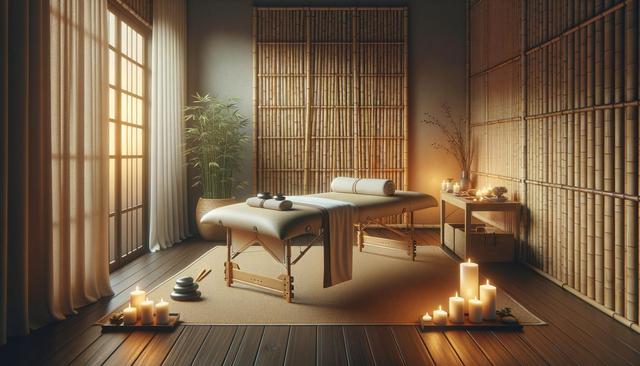The Roots of Asian Massage Traditions
Asian massage has deep roots in ancient healing systems developed across countries such as China, Japan, Korea, and Thailand. These practices often blend physical techniques with philosophical and spiritual elements. For instance, Chinese massage styles like Tui Na are closely linked to Traditional Chinese Medicine, focusing on the balance of energy, or ‘Qi,’ in the body. Thai massage, on the other hand, integrates assisted yoga and acupressure to stimulate energy lines known as ‘Sen.’
Across these traditions, the aim is not just physical relief but also emotional and energetic harmony. This holistic approach is one of the reasons why many people seek out Asian massage as a complement to modern wellness routines. Rather than simply targeting pain points, these methods consider the entire body’s systems, offering a more balanced and sustainable form of care.
Key principles often found in these traditions include:
- Restoring energy flow through pressure points and meridians
- Improving circulation and flexibility
- Supporting the body’s natural healing process
By recognizing the interconnectedness of body and mind, Asian massage techniques help individuals achieve a greater sense of well-being, both physically and mentally.
Techniques That Define the Practice
Asian massage comprises a variety of techniques, each suited to different needs and preferences. While the specific methods vary by region, many share common elements such as rhythmic pressure, stretching, and deep tissue manipulation. These are designed not only to relieve muscle tension but also to stimulate internal systems like the digestive and circulatory systems.
Among the widely practiced techniques are:
- Acupressure: Using fingers or tools to press specific points on the body to release tension and promote energy flow
- Tapping and kneading: Gentle but firm movements that help loosen muscles and improve blood flow
- Stretching: Common in Thai massage, this helps increase flexibility and joint mobility
These methods are typically performed on a floor mat or low table, often with the client fully clothed in comfortable garments. Unlike Western massage styles that usually involve oils and skin contact, Asian massage places greater emphasis on energy lines and body mechanics.
Clients often report a deep sense of calm and rejuvenation following a session. The careful application of pressure and movement encourages the body to release stored tension and stress, resulting in long-lasting benefits.
Health Benefits Backed by Practice
The health benefits of Asian massage are extensive and supported by both traditional beliefs and modern research. These therapies are known to address a wide range of physical and mental concerns, making them a valuable addition to holistic healthcare routines. Regular sessions can contribute to overall wellness by enhancing the body’s natural functions and promoting relaxation.
Among the reported benefits are:
- Reduction in muscle stiffness and chronic pain
- Improved posture and flexibility
- Relief from stress, anxiety, and fatigue
- Better sleep patterns and energy levels
By working with pressure points and energy lines, Asian massage may also support internal organ function, helping to regulate digestion, boost immunity, and even balance hormones. While individual experiences vary, many clients find that the effects of a session last well beyond the massage itself.
It’s important to note that while Asian massage can be highly beneficial, it should not replace medical treatment for serious health conditions. Instead, it serves as a supportive practice that enhances traditional healthcare methods.
What to Expect During a Session
For those new to Asian massage, knowing what to expect can help ease any uncertainty. Sessions typically begin with a brief consultation to understand the client’s needs and any specific discomforts. This allows the practitioner to tailor the massage to individual concerns.
Depending on the type of massage, you may be asked to lie on a floor mat or low table. Most Asian massage styles involve the client remaining clothed in loose, comfortable attire. The practitioner will use a combination of hands, elbows, forearms, or even feet to apply pressure, stretch limbs, and guide the body through gentle movements.
Here are a few tips to enhance your experience:
- Communicate openly about pressure levels and comfort
- Stay relaxed and breathe deeply to support the process
- Allow time afterward to rest and rehydrate
Sessions can range from 30 minutes to over an hour, depending on the chosen technique and individual goals. Many clients report an increased sense of clarity and relaxation immediately after the massage, along with gradual improvements in physical discomfort over time.
Incorporating Asian Massage into Your Wellness Routine
Integrating Asian massage into your wellness routine can be a meaningful step toward long-term health and balance. Whether used for occasional relief or as part of a regular self-care plan, these therapies offer a gentle yet effective way to reconnect with your body and mind.
To make the most of your experience, consider the following:
- Schedule consistent sessions to maintain benefits over time
- Combine massage with other healthy habits like yoga or meditation
- Choose a qualified practitioner familiar with your health needs
Asian massage is more than a remedy for sore muscles—it’s a practice that fosters harmony within yourself. By tuning into your body’s signals and responding with care, you can cultivate a deeper sense of well-being that supports every aspect of your life.
For those seeking a calm, mindful approach to healing, Asian massage offers a unique and enriching path. Its focus on balance, energy, and holistic care makes it a valuable addition to a thoughtful, health-conscious lifestyle.
Conclusion: Embracing the Wisdom of Touch
Asian massage presents a timeless approach to wellness, rooted in centuries of knowledge and tradition. Whether you are managing daily tension, seeking deeper relaxation, or exploring holistic health options, these techniques offer a meaningful way to support your body and mind. With regular practice and the guidance of skilled professionals, you can enjoy lasting benefits that extend far beyond each session. Embrace the calm, the clarity, and the quiet strength that comes from this gentle art of healing.


